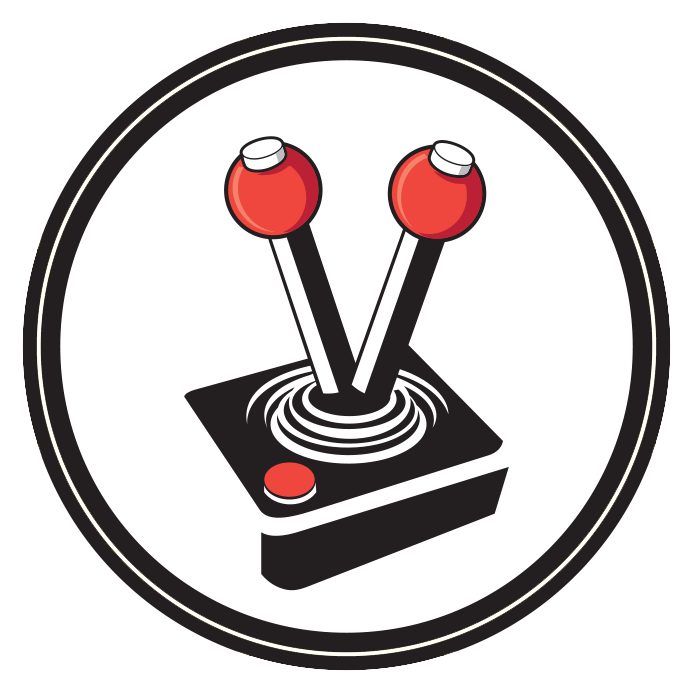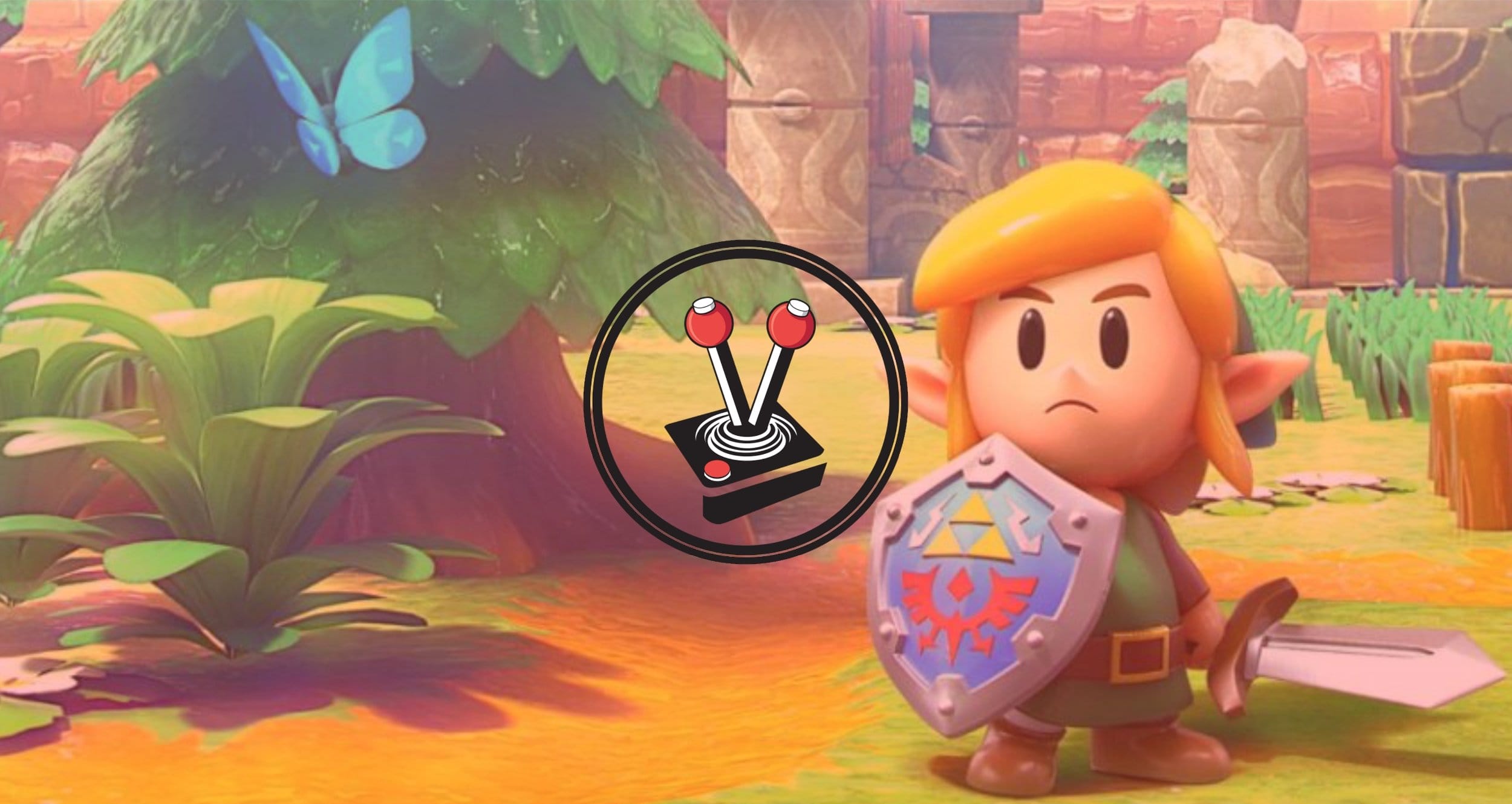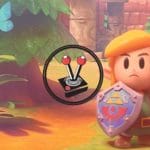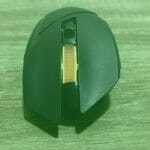Growing up, I was never really a console guy. Sure, I owned a PlayStation and I played many Japanese Role-playing games (JRPGs) such as Dragon Quest, Final Fantasy and Legend of Dragoon. However, when asked whether I would like to get an upgraded computer, or a Super Nintendo Entertainment System (SNES), I chose the computer without even giving it a thought. Thinking back, I would do the same, but for one reason only: I would get to play The Legend of Zelda: Link’s Awakening on a vastly superior handheld console, and appreciate everything it has to offer.
The amount of reach the game has is unbelievable. Since receiving the game for review, I have been bombarded with questions about whether the remake is better than the original and if the music as great as people remember, among other queries. Alas, I do not share this nostalgia. I experienced the game for the first time during this review, with virgin eyes and a fresh perspective.

Awaken the Wind Fish!
The Legend of Zelda: Link’s Awakening originally released in 1993 on the Nintendo Game Boy. According to many, it featured the run of the mill Game Boy graphics and art style of the time. However, it did manage to stick out from the rest with its cutesy green protagonist and hard-as-nails real-time combat. The game has received several re-releases over the years, with the recent Nintendo Switch remake being the newest and most radical of the lot. While it has received a huge facelift and an incredible re-orchestrated soundtrack, the story remains largely the same.
The journey starts with a fully animated cutscene where our hero and player-character, Link, finds himself in a big storm. The storm shipwrecks Link on Koholint Island, without a sword, shield, or anything else. The game opens up when Link is found on the beach by Marin, a young girl who lives with her father in a nearby town.
As expected from old-school titles and their jarring charm, the game then immediately throws you into action. You are instructed to find your sword, but not before an owl flies up with your ultimate goal in tow. While finding your sword, shield and getting to grips with what happened may be easy, Koholint Island will not let you leave until its curse is broken. As such, the owl instructs you to find the eight Instruments of the Sirens, which will awaken the Wind Fish. Besting the monsters that guard them and exploring the island then becomes Link’s number-one priority.
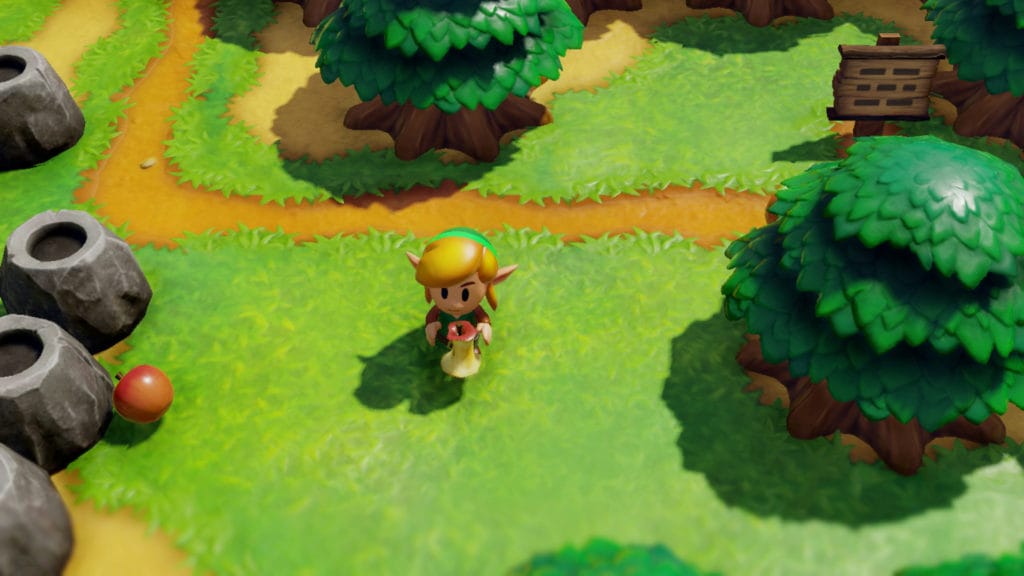
In typical JRPG fashion, having to collect eight key items means you will undoubtedly be taking on eight dungeons of increasing difficulty. While this is largely true, the game’s true plot will show itself by the time you head into the second dungeon. I appreciated this facet of the game. So many RPGs today are concerned with filling an open world with countless random things that serve no real point. Rather, the brevity of Link’s Awakening hearkens back to the likes of Final Fantasy IV (1991), where the player is set on a single journey with very few reasons to stray from the path.
With that said, there are side-quests and little things you can do along the way to enhance the story in Link’s Awakening. What is especially great is how you will do most of these side quests on the way to the story objectives. For instance, upon returning from the second dungeon, you will notice how a couple of bad guys came and stole Chain Chomp, a cute PacMan-like cannonball with huge teeth. Getting Chain Chomp back is a matter of moving on with the story. Chances are you will run into him and get him rescued long before you need his ability to access one of the dungeons. It is ingenious and pleasant.
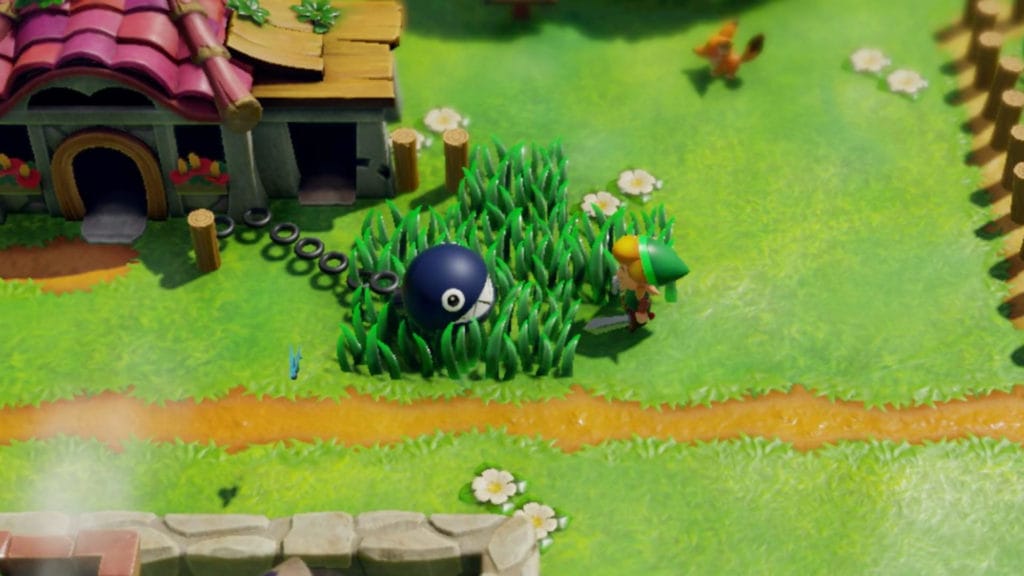
Jump for joy
Beyond the great story structure and how well Link’s Awakening handles side activities, another facet I enjoy is the gameplay. Exploring Koholint Island is a matter of facing one direction and stepping forward. When you find yourself in a pickle with enemies surround you, the excellent combat comes to your aid. Link can strafe left and right while blocking with his shield, and charging up an attack with his sword can all be done at the same time. The process of doing so is natural, intuitive and good fun.
When the game starts, Link’s abilities are reliant on quick movement. You find the sword early on, and the shield not too long after that. However, once you make your way through the forest north of the town and manage to unlock the ability to jump, a whole new world of possibilities arrives! Suddenly, you can go back and enter a house you could not before, access a secret room with a treasure chest in a previous dungeon, and more. In this way, the game manages to incorporate Metroidvania-like elements into its open world. If you are struggling to access an area or get through to something new, try returning later!
As you progress through Link’s Awakening, you will also collect various items you can use. Whereas items in previous versions of the game were locked to the capabilities of the Game Boy, the remake adequately opens up via several buttons and systems. As such, The Legend of Zelda: Link’s Awakening features a new mechanic where you can slot two items into the X and Y buttons, respectively. Switching them out for other items is as easy as opening the inventory.
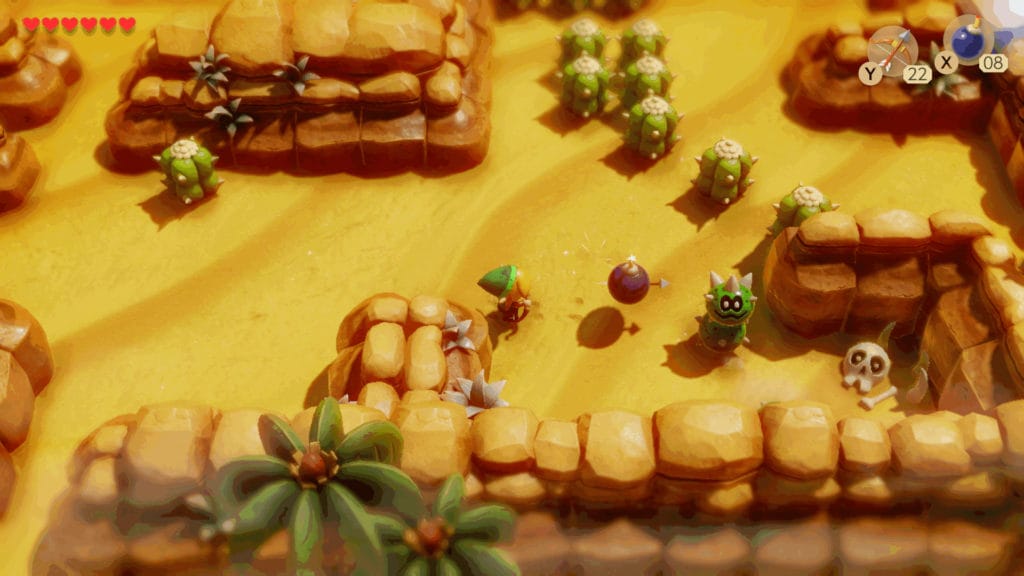
I may not have played it, but I know that you simply could not do multiple things at once on the original version of the game. In the Nintendo Switch remake, however, you can do as many things at the same time as there are buttons on the device. As such, you can map the jump ability to Y, while you hold a direction with the D-pad, and charge up a sword attack with B. This is a great way of getting rid of pesky enemies that suck you in, or push you around.
Combat has also received a huge overhaul with the Nintendo Switch remake. Enemies equipped with shields have to have their attacks blocked before you can retaliate. Some enemies have to be dodged, blocked, and then attacked, all in one go. While others just need to be avoided and stabbed.
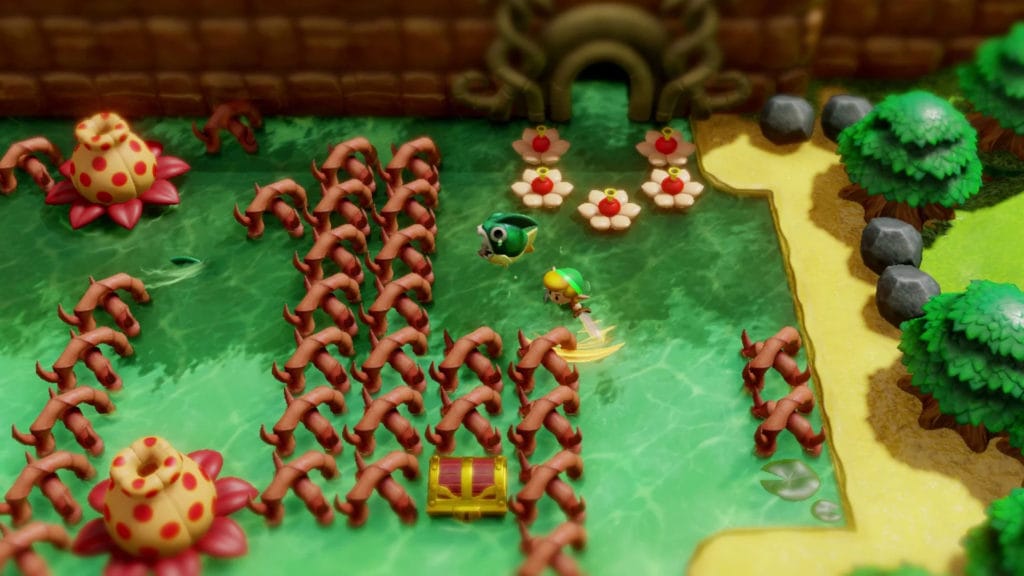
Beautiful, haunting, cute
While you can expect a very modern take on an old-school concept in the story and the way Link’s Awakening is structured, it is the updated controls and gameplay elements that help bring a thirty-year-old game into the 21st century. The remake also looks vastly different from the original title.
The Legend of Zelda: Link’s Awakening is a beautiful game. The art style is wonderfully endearing and fits the overall aesthetic of many newer Nintendo franchises. It is also quite cutesy and pleasing to look at – there are very few sharp objects. Rather, colours flow boldly and freely over one-another as the game mimics shadows, while edges are softened thanks to a light-cell shading effect. In this manner, the game looks like it took the best elements from Legend of Zelda: Breath of the Wild, and combined it with an incredible homage to the Game Boy Colour version of Link’s Awakening from 1998.
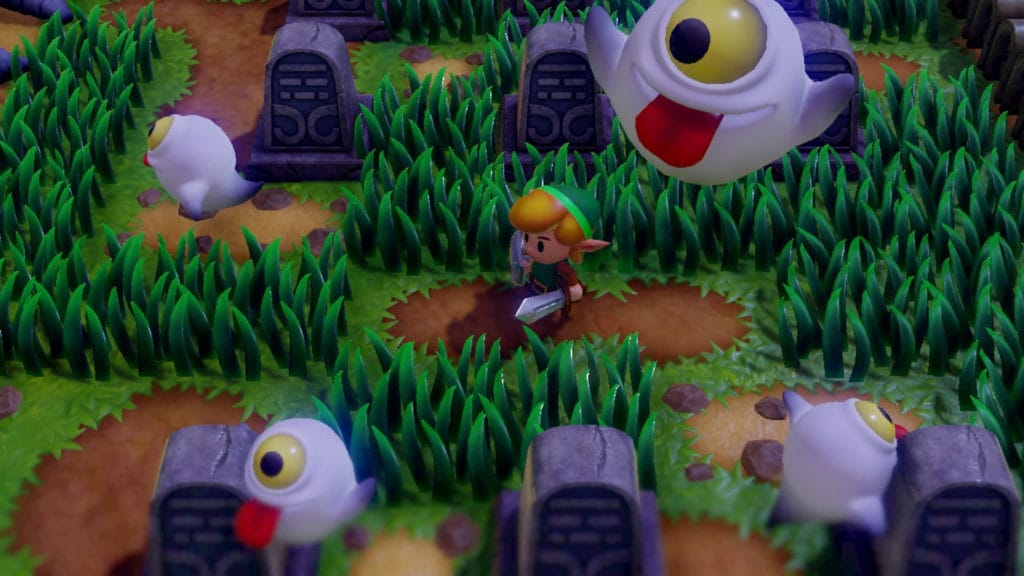
With that said, I did notice the game’s rather bumpy frame rate. This was particularly evident whenever I would move through an area with speed – basically whenever I would run back to town to check on the residents (you know, just in case something else goes wrong). I believe the game received a recent update resolving the issue, but I still feel the frame rate could be better.
Fortunately, the game always loads quickly and the open-world itself is free from any loading whatsoever. Entering rooms and dungeons is a matter of the game-changing perspectives, more so than actually having to unload the open world, and inject a whole new area into the Random Access Memory (RAM). I assume the reason for this is because of the extremely graphic nature of the remake. Either way, the game is gorgeous and I would not have it any other way.

The perfect re-awakening
While I am by no means a hardcore Legend of Zelda fan, I cannot fault the game for anything. It features an engrossing main quest through every area on the map; engaging side quests that feel like they have been handcrafted from scratch; and beautiful visuals that look astonishing on the Switch.
The gameplay is great and animations are smooth. While I did experience occasional frame rate issues, it did not affect gameplay performance. The actual design of the game’s models and the world are beautiful, colourful and bold, but not sharp or edged aggressively. It is a truly pleasant experience!
The Legend of Zelda: Link’s Awakening may be almost thirty years old. However, the Nintendo Switch remake modernises the game and brings with it a bevvy of enhancements; making it the perfect entry point for anyone interested in a JRPG (one that is capable of being played while on the go). The game is near perfect, and I would be glad to return to it, time and time again, in the future.
| Time Played | 25+ hours |
| Difficulty | N/A |
| Platform | Nintendo Switch |
| Acquisition | Review copy courtesy of Nintendo |
Junior Editor at Vamers. From Superman to Ironman; Bill Rizer to Sam Fisher and everything in-between, Edward loves it all. He is a Bachelor of Arts student and English Major specialising in Language and Literature. He is an avid writer and casual social networker with a flare for all things tech related.
